Ume plum vinegar brings a bold, salty-sour kick to these two quick, plant-based salad dressings: a tangy vinaigrette with a touch of sweetness and a rich and savory ume-tahini dressing. Both come together in minutes and add tons of flavor to salads, grain bowls, noodles-whatever's on your plate!
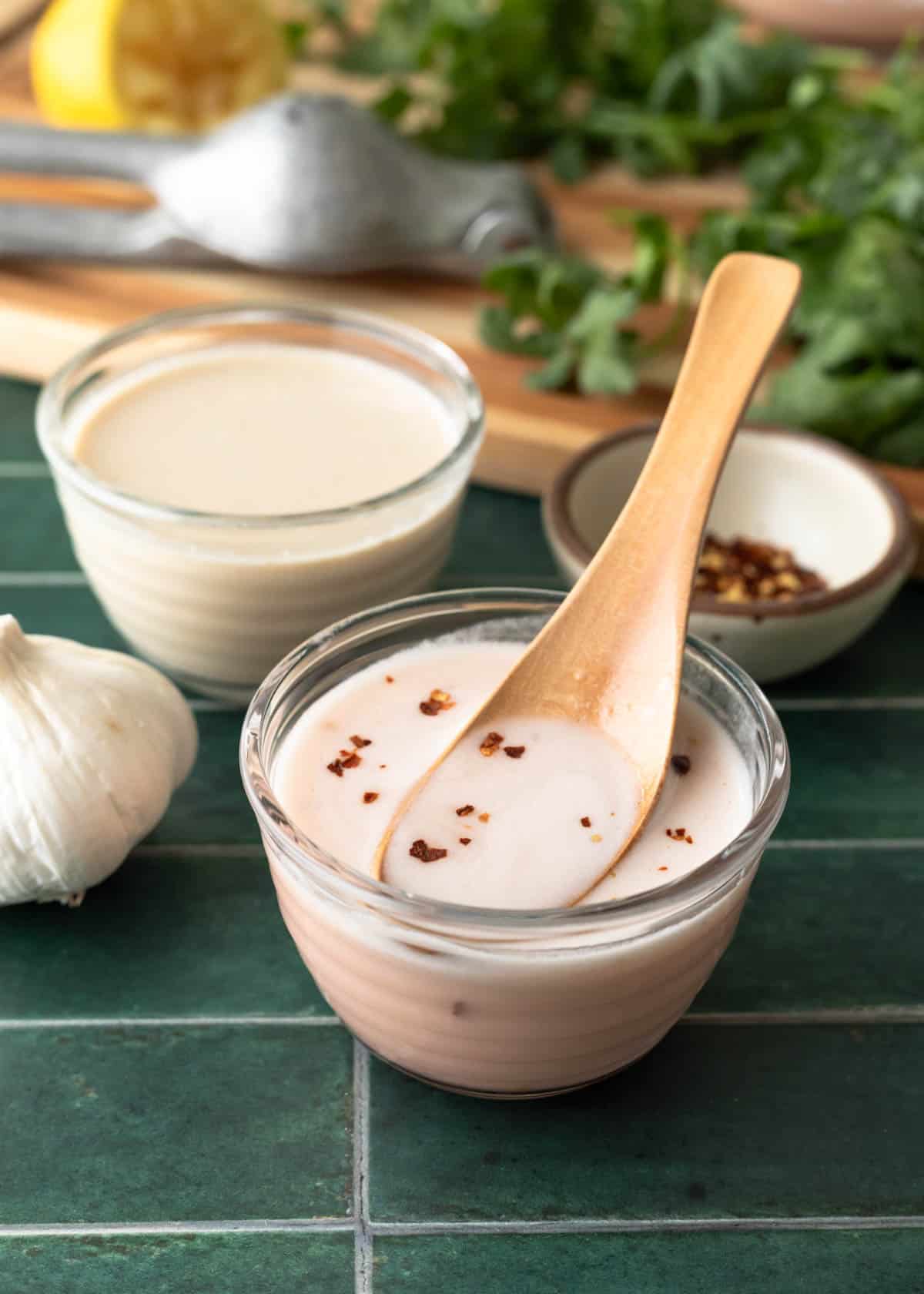
Jump to:
What is Ume Plum Vinegar?
Ume plum vinegar isn't actually a true vinegar. It's the salty, tangy brine left over from pickling umeboshi plums, a type of Japanese fruit somewhere between an apricot and a plum.
I was first introduced to umeboshi plums as a kid, back when my mom was following a macrobiotic diet. At the time, I didn't fully appreciate the intense, salty-sour kick. The fact that she encouraged me to eat them anytime I was sick probably didn't help either.
Fast forward a few decades, and now I love the unique flavor of pickled plums AND their briny sidekick, ume plum vinegar.
The "vinegar" is bright pink in color and brings a one-two punch of sour and salty. It's intense and a little goes a long way.
Why It's Great for Sauces
What makes ume vinegar magical in sauces, dressings, and marinades is its ability to do a lot with just a little. It adds depth without needing much else, meaning fewer ingredients but big impact.
In the vinaigrette recipe I'm sharing today, it's sharp and sparkly. In the tahini version, it cuts through the nutty richness with perfect tang.
Basically, if you love flavor-forward condiments and sauces, ume plum vinegar deserves a front-row spot in your pantry (or fridge door).
You can usually find it in natural food stores, Asian markets, or online-look for it near the Japanese ingredients. It keeps well in the fridge-up to a year, at least-or in a cool, dark spot in the pantry.
Since a little goes a long way, one bottle will last you through plenty of dressing adventures!

Ingredients and Substitutions
These two salad dressings share a lot of the same ingredients, with a few differences.
- Ume plum vinegar: Since this is the star of the recipe, I really hope you won't try to substitute it. But if you don't have any and really want to make the dressing, red wine vinegar plus salt (to taste) is probably the closest thing to ume vinegar. You might also experiment with other fruity types of vinegar.
- Fat: For the creamy dressing, you'll need tahini, which is simply toasted sesame seeds ground into a paste. Or for the pinkish-hued vinaigrette, you'll need a neutral tasting oil like avocado. I don't recommend olive oil here. The strong flavor clashes with the unique taste of ume plum.
- Lemon juice: Just a touch of fresh lemon adds needed brightness to complement the ume vinegar. Lime juice is also nice.
- Fresh ginger and garlic: for kick and extra savory notes; these are the only other flavors added to the dressings, so don't skip 'em!
- Sweetener: The vinaigrette is slightly sweet, but feel free to play around with the amount. The tahini version is more savory but does use a little maple syrup for balance. The maple flavor didn't work well in the oil-based dressing. So for that one, a neutral-tasting sweetener is better, like agave syrup or regular granulated sugar.
Prep Notes and Equipment
I like to use a blender for the vinaigrette because it helps with emulsification. If you'd rather just shake it up in a jar, that works, too.
For the tahini dressing, all you need are a bowl and a small whisk.
Make-Ahead Tips & Storing
Both dressings are great for meal prep and stay fresh in the fridge for up to 5 to 7 days in a sealed jar or container. Just give the vinaigrette a good shake before using-it can separate a bit (that's normal!).
The tahini version thickens as it chills. So if it gets a little too thick, just stir in a splash of water or lemon juice to loosen it up.
Want to save this recipe? 📩
Keep an eye out for more delicious recipes. Unsubscribe anytime.
Want to batch it? Go for it! These dressings are small-batch friendly, but they also double or triple easily.
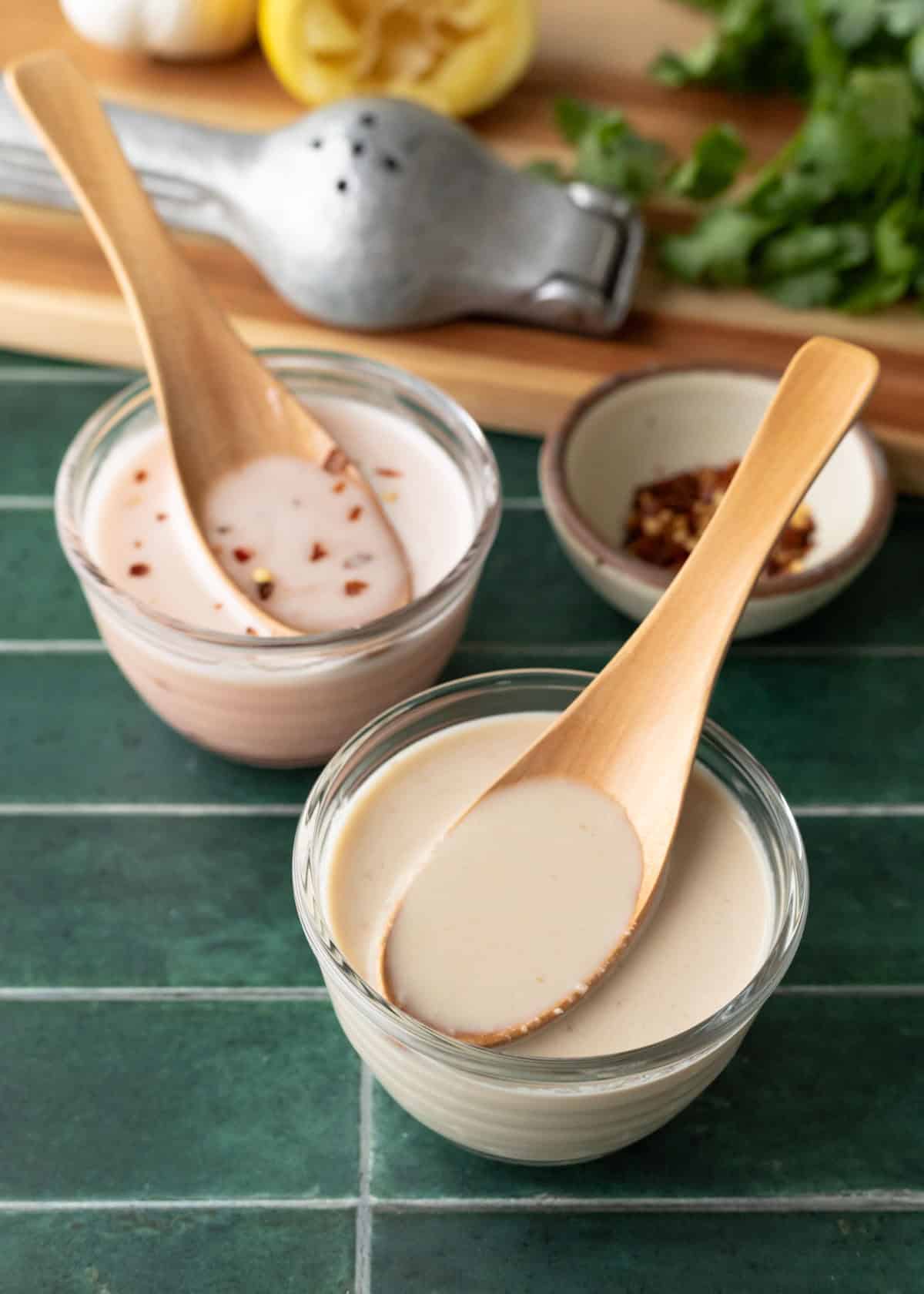
Serving Suggestions
Both of these dressings are great on any kind of salad, including kale salad, coleslaw, edamame salad, and carrot salad.
But also, both are total multitaskers. So don't let the "salad dressing" label box them in.
The vinaigrette is zippy, salty, and a little sweet. Use it:
- as a dipping sauce for sushi or spring rolls
- drizzled on roasted veggies and potatoes
- over grain bowls or cold soba noodles
- and as a quick marinade for tofu or tempeh
The creamy tahini version brings a garlicky and savory vibe that's great for:
- a dipping sauce for a veggie tray
- grain bowls or roasted sweet potatoes
- a spread for sandwiches, wraps, and burgers (yes, really-use it instead of mayo!)
More Ways to Use Ume Plum Vinegar
You'll want to use that bottle of ume plum vinegar for more than just salad dressing. It's amazing in anything that needs a little lift without adding more salt or citrus.
Use it to make pickled vegetables or whip up a quick batch of pickled red onion for your tacos and bowls. Drizzle it over rice and grains instead of soy sauce, and as a replacement for vinegar and salt in your sautéed greens.
And because of its unique tang and saltiness, it also works some serious magic in vegan cheese recipes!
FAQ
It's salty, sour, and punchy-kind of like a supercharged vinegar with a fruity, fermented edge. A little goes a long way, which is why it works so well in simple salad dressings.
Ume plum vinegar is usually made with ume plums, sea salt, and shiso leaves, all of which are naturally gluten-free. So yes, most brands should be gluten-free, but it never hurts to double-check.
I hope you enjoy these two versatile dressings. If you try either one, be sure to comment below to let us know!
Recipe
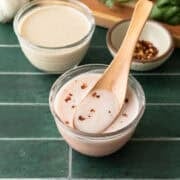
Ume Plum Vinegar Salad Dressing (Two Ways)
Equipment
Ingredients
For the tahini-based dressing:
- 3 Tablespoons tahini
- 4 teaspoons ume plum vinegar
- 2 Tablespoons fresh lemon juice
- ¼ cup water - or more for thinner consistency
- 1 teaspoon freshly grated ginger root
- 2 small cloves garlic, grated or minced
- 2 teaspoons maple syrup - or sub agave or sugar
For Ume Plum Vinaigrette:
- ⅓ cup neutral oil - I like avocado
- 2 Tablespoons ume plum vinegar
- 2 Tablespoons fresh lemon juice
- 2 Tablespoons sugar - or agave nectar
- 1 teaspoon tahini - for consistency
- 2 small cloves garlic, grated or minced
- 1 teaspoon freshly grated ginger
- pinch red pepper flakes
- ¼-½ teaspoon toasted sesame oil, optional
Instructions
- For the tahini version, combine all ingredients in a bowl, and whisk until smooth. Taste and adjust the flavors as desired. Add a tablespoon of water for a thinner consistency. Store in a lidded jar or other container in the fridge for up to 5 days.
- For the oil-based dressing, in a blender combine all ingredients except the oil, red pepper flakes, and sesame oil. While blending on low speed, slowly drizzle in the ⅓ cup oil. Stop to taste and adjust the flavors. If desired add the toasted sesame oil and red pepper flakes, and pulse to incorporate. Pour into a lidded jar or other storage container and refrigerate until ready to use. Keeps for 5-7 days.
Notes
Estimated Nutrition (per serving)
Nutrition information is an estimate and will vary depending on the exact amounts and specific products and ingredients used.


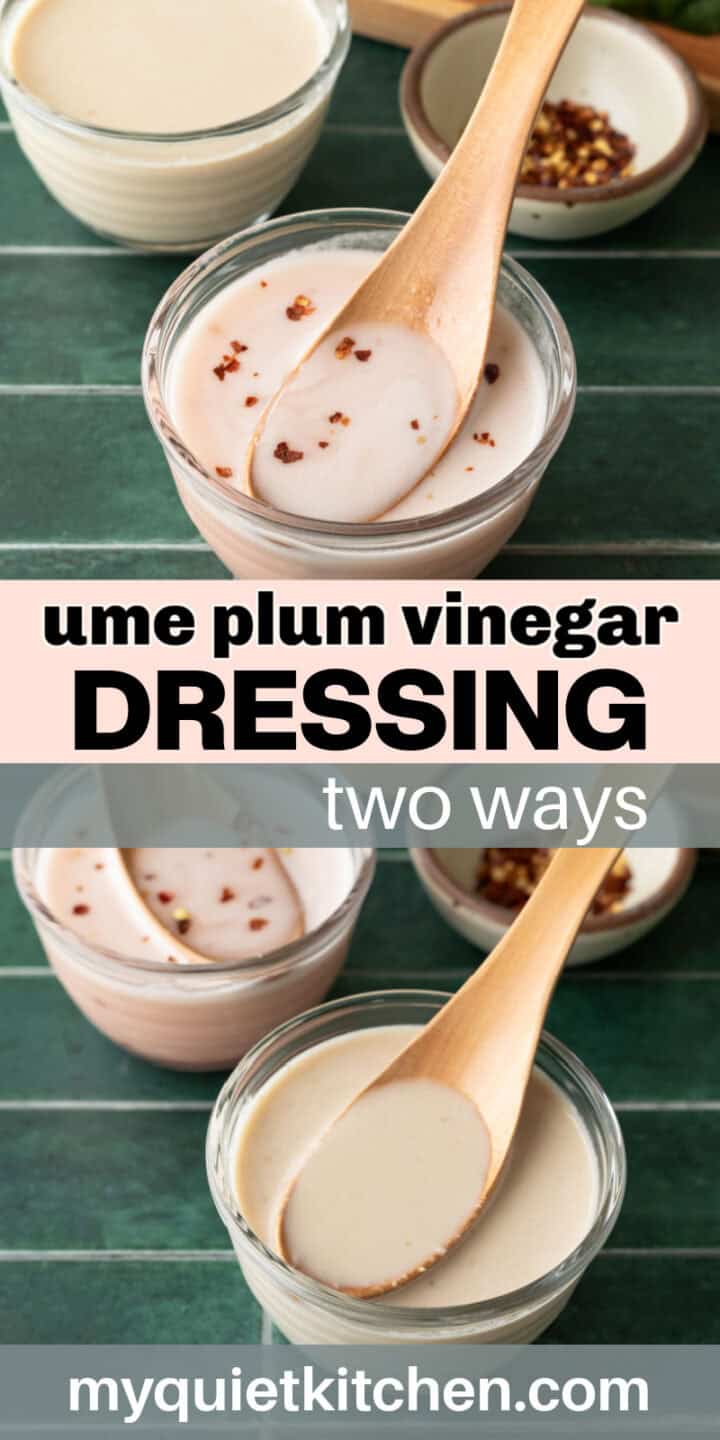
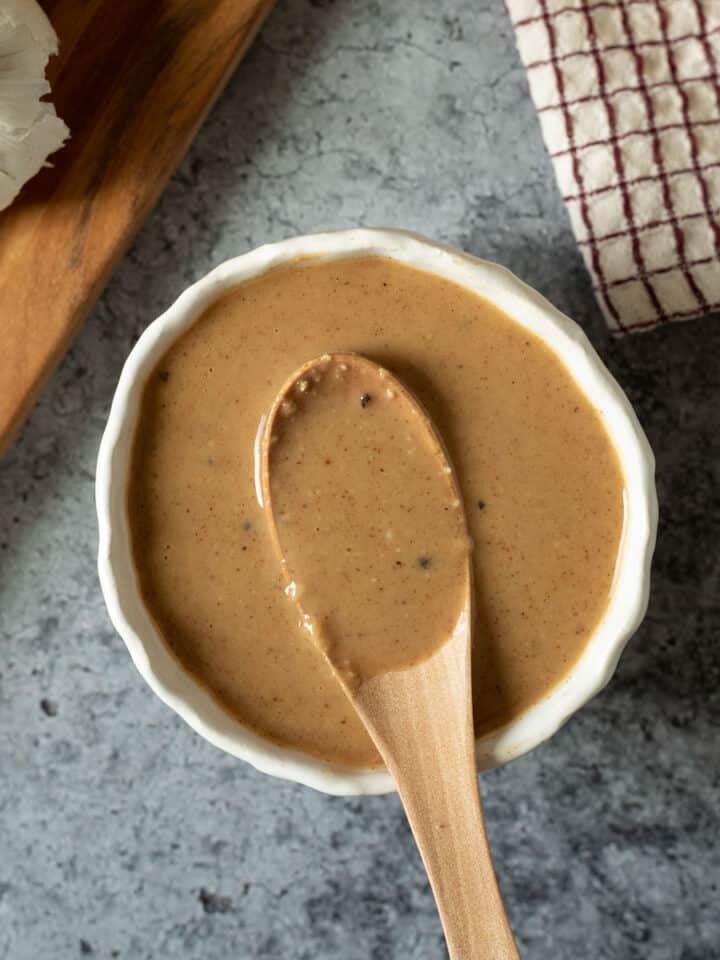

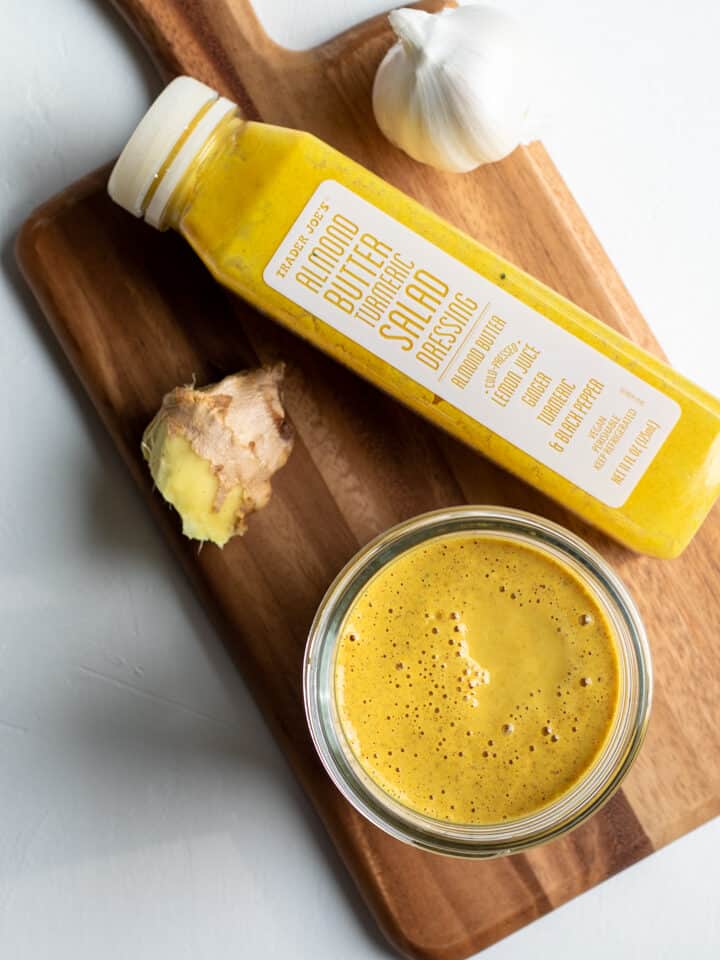
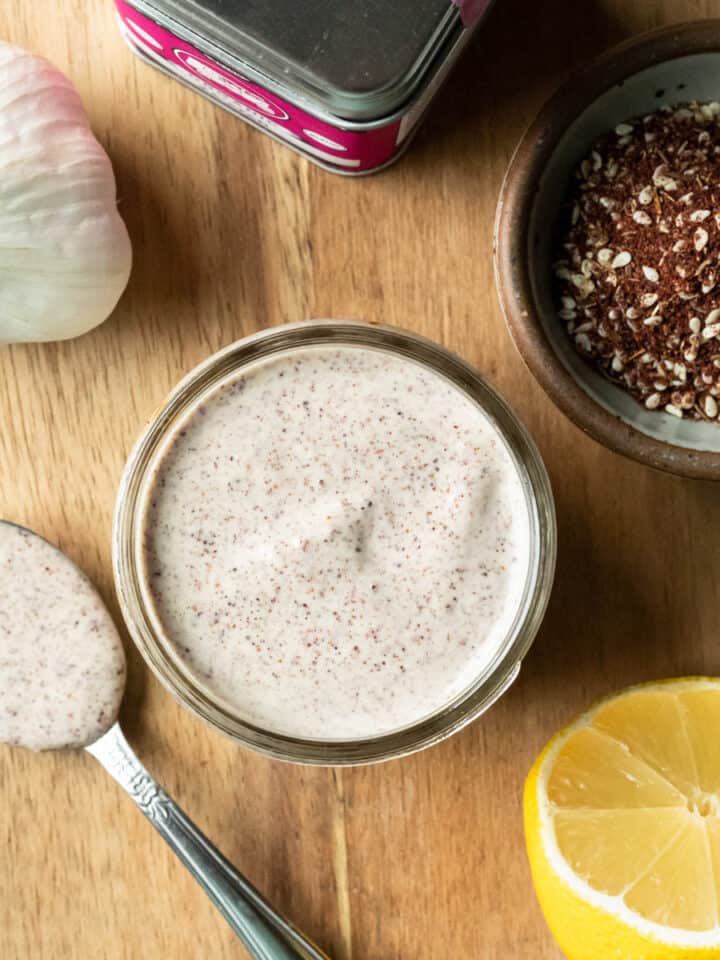
Jodi says
Yummy! I made the tahini version last night to drizzle over roasted veggies. Plan to try the Ume vinaigrette today. Thank you!
KJ says
Lori, when practicing macrobiotics, I was introduced to the Umeboshi Plum. I love them so much but have forgotten about them, and I don't know why. Thank you for reintroducing them, as none of the food bloggers I subscribe to have ever used them. Maybe I need to start using them as a replacement ingredient in some of my dishes. Apart from your dressings, do you use them in any of your dishes?
Love your blog
Lori Rasmussen says
Thank you so much, KJ!
So far this is the only recipe on the blog with any umeboshi, but I plan to incorporate it more. I've been experimenting with it to create a vegan blue cheese dressing but I'm not happy with it yet. Blue cheese used to be my absolute favorite, so I'm pretty picky!
I think it's a great idea to start incorporating it into your dishes. My mom always mixed a few pinches of the plums into our brown rice. You could use it instead of vinegar and salt (or soy sauce) in so many things.